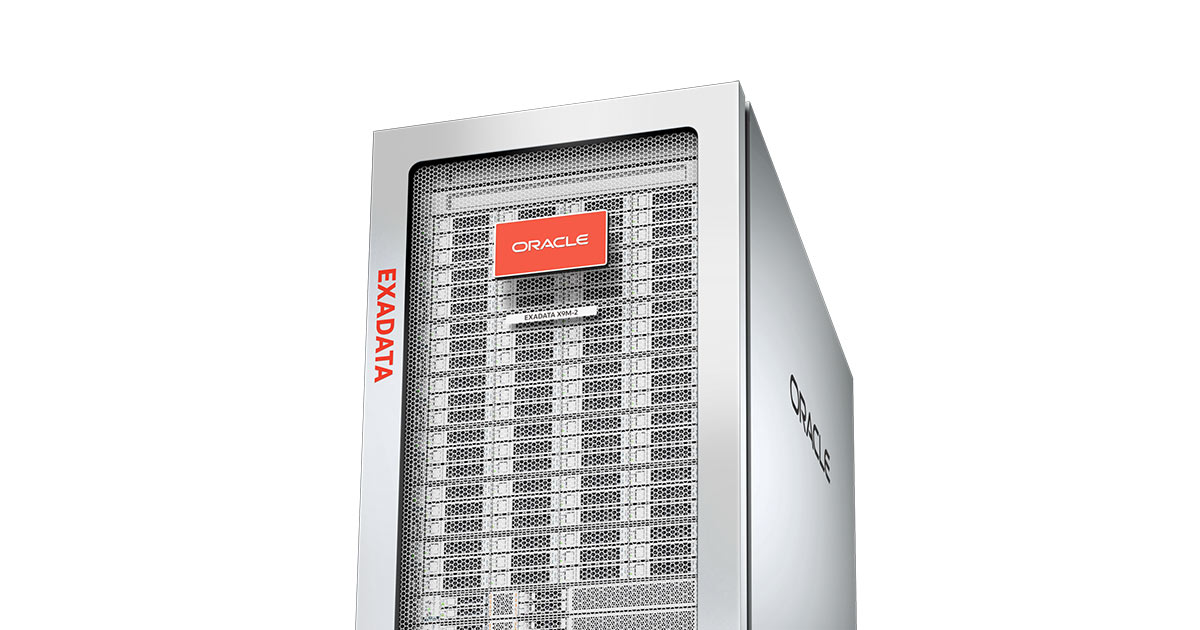 CLOUD
CLOUD
 CLOUD
CLOUD
 CLOUD
CLOUD
Oracle Corp. today is completing the rollout of its latest generation of Exadata processors with an announcement that computing services based on the Oracle Exadata Cloud Infrastructure X9M appliance are now available in Oracle Cloud Infrastructure.
The Oracle Autonomous Database Service running on Exadata infrastructure (pictured) provides significant improvements in performance, throughput and capacity without a corresponding increase in costs, Oracle said. Organizations can use the cloud platform to consolidate large numbers of transaction processing, analytics and mixed database workloads onto a single cloud service.
The machines run the latest generation of Advanced Micro Devices Inc. microprocessors, which feature 64 cores. That enables Exadata Cloud Infrastructure X9M to scale up to 8,064 virtual central processing units, which is 2.5 times as many as were available on the preceding X8M platform, and up to 3.1 petabytes of uncompressed database capacity, a 28% increase.
Internal networking speeds have been boosted 80% with double the bandwidth to application server clients, yielding sub-19-microsecond latency on SQL queries and up to 87% more input/outputs per second, Oracle said. Scan rates have all also been speeded up by 80%, to 2.88 terabytes per second.
Oracle claimed the sub-19-microsecond I/O latency is 25 times better than that offered by competitor Amazon Web Services Inc.’s RDS and 50 times better than that of Microsoft Corp.’s Azure SQL. With capacity for up to 64 storage servers, X9M is 137 times faster than a single Azure SQL instance and 384 times faster than the Amazon RDS instance, according to Oracle.
The X9M appliance was rolled out last September, initially for on-premises deployment. With the introduction of the cloud service, “Regardless of where customers choose to run their applications, they have architectural identicality,” said Steve Zivanic, global vice president of database and autonomous services.
“Migrating applications to the cloud should involve minimal disruption, no downtime and no application and data model changes,” said Ashish Ray, vice president of product management.
The service will be available across Oracle’s rapidly expanding cloud footprint, which now comprises 37 regions around the world, with seven more planned this year. The company also has 11 “Azure Interconnect” regions, which allow Microsoft customers to access Oracle database services from within Azure.
The service is designed to scale both out and up, with customers able to turn on cores for more compute-intensive operations and also add servers to the cluster incrementally to accommodate larger databases. Each incremental server can add up to 126 compute cores, 1.3 terabytes of random-access memory and a 50-gigabit link to the OCI fabric, Ray said. Storage servers each support 51 terabytes of database storage and run on 24-core Intel Corp. Ice Lake processors. Ray said scalability is almost linear using Oracle Application Clusters.
The company touted its aggressiveness on price, saying customer fees have not increased in the transition from the 8XM to the 9XM service despite the 180% increase in scanning speed and 21-fold increase in processing cores. “We do deep engineering with storage servers, database servers and the network for steep performance improvements,” Ray said.
Among the other performance and capacity gains the company cited are a 40-fold increase in CPU capacity, a 15-fold increase in memory, to 44 terabytes, and a 32-fold boost in networking speed, to 1.6 terabytes per second. The storage servers boast a 21-times increase in SQL processing cores, memory and cache and a 27-fold increase in database size to 3.27 petabytes.
Enhancements to Exadata software include support for blockchain tables, storage index and columnar cache persistence through reboots, faster software and firmware updates and faster decryption and decompression algorithms. “Persistent cache means if you bring your storage server down for an upgrade the cache is still there when you restart,” Ray said.
Migration to the next generation of Exadata is straightforward, he said. “You create a Data Guard replica on the X9M and switch over,” he said. “Data Guard keeps [secondary] databases in synch with the production database at the deep memory level so data is shipped across the network to the receiving servers in real-time with data protection.” Customers can then restart on the new service.
THANK YOU